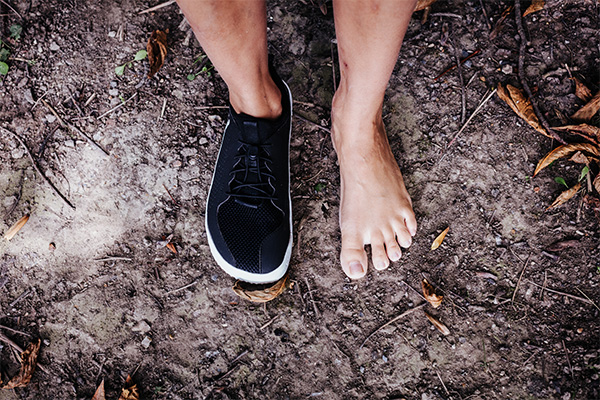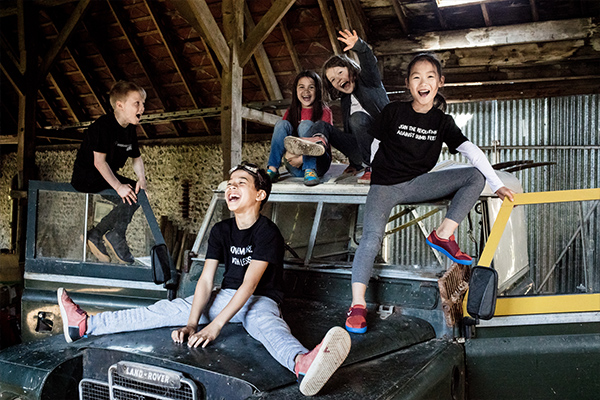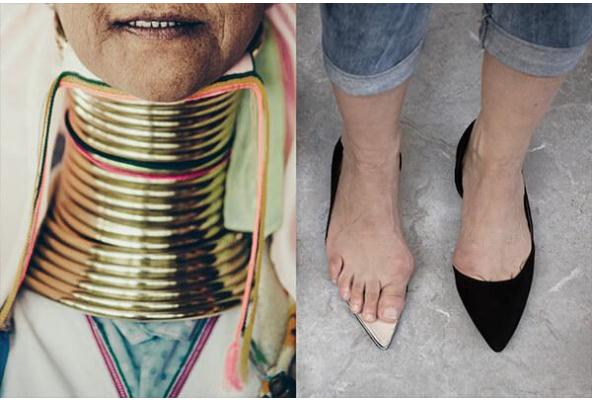BUNIONS: ARE THEY REALLY JUST DOWN TO GENES?
Let’s talk BUNIONS: the painful and even debilitating foot deformity many doctors and podiatrists will tell you is hereditary, and that their solution is arch support, inserts and even surgery.
So let’s also talk INHERITANCE.
When we think about what is passed from parent to child, it’s worth considering for a moment what we get from our genes, and what we get from our culture.
For example, the women of the Kayan Lahwi tribe in Myanmar inherit their seemingly long necks. But you would be hard pressed to find someone who would claim this is down to their genes. From around five, traditionally girls start wearing increasingly more brass rings round their necks which gives the appearance of elongating them (in fact, the weight of the brass pushes the collar bone down and compresses the rib cage, so necks aren’t actually longer, but their deformed clavicle makes it look that way). Why? The tribeswomen have said the coils are about beauty and cultural identity. Nurture, not nature.


So what have bunions got to do with this?
A group of researchers from Harvard recently published an article on the extensive ‘Framington Foot Study’ where they concluded that bunions are highly hereditable among European Caucasians, with 36% of the over-65’s being affected by bunions.
According to sports podiatrist Dr Ray McClanahan, however, this study is ignoring the ‘brass rings’. He says, “The problem with their conclusion is that they failed to control for the footwear that their research subjects were wearing, and had worn over their entire lives. If the researchers at Harvard would have looked at the footwear their subjects wore throughout their life, they would see that what is hereditable is feet that are wider than most of the footwear those individuals have worn over the course of their lives.”
Just like the Kayan women, an external element in our culture is to put children in thin, narrow, pointy shoes all their lives. (And when we consider that women get more bunions than men – maybe this might have something to do with the particular shape of women’s narrower, pointier shoes?) Dr Ray says our feet are eventually pushed into the shape of our shoes, with narrow toe boxes pushing the big toe towards the other toes and thus the bunion deformity begins.
Meanwhile, there have been other studies done comparing the feet of traditional shod and unshod cultures. A German / South African study concluded that kids who grow up barefoot have better movement and balance skills than those who grow up in shoes. And an Indian study that compared shod and unshod kids in India concluded that the children in shoes presented with a higher rate of foot deformities and flat feet.
While there is obviously a lot more work to be done on what we do inherit from our parents when it comes to feet and bunions, we think it’s pretty clear maybe it’s time we rethink shoes, especially for our girls.
Traditional shoes are not only narrow and pointy, they also have stiff, hard soles and a heel, pushing the foot out of its natural alignment and interfering with healthy, natural development.


At Vivobarefoot we make all our VivoKids shoes with a whole lot of love to be wide, flat and thin, allowing the toes to grow straight and strong, while ensuring there is minimal interference in how the foot moves as kids’ grow.
We believe we should look long and hard at the ‘facts’ we take for granted about our genes and what we inherit, and think carefully about what’s nurture and what is nature. After all, our feet and bodies have been evolving for hundreds of thousands of years – we owe it to our ancestors! (And our kids)
Studies cited:
Harvard study on genetic component of bunions:
https://www.wiley.com/WileyCDA/PressRelease/pressReleaseId-108722.html
Study comparing South African and German kids/teenagers

